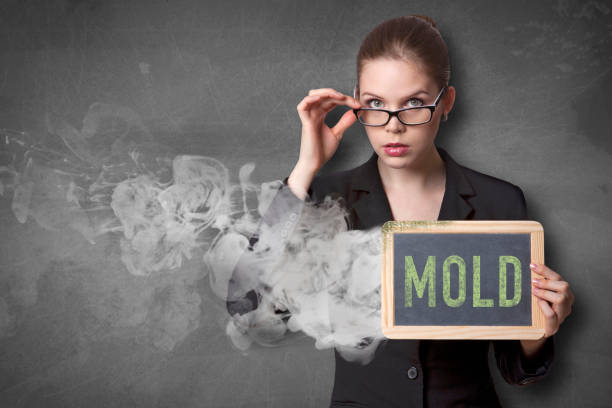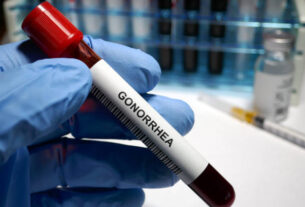Mold is a type of fungus that belongs to the kingdom Fungi. It is a natural and widespread organism found in both indoor and outdoor environments. Mold reproduces by releasing tiny spores into the air, which are invisible to the naked eye. When these spores drop on any surfaces with suitable conditions, such as moisture and organic materials, they can grow and form visible colonies of mold
Mold, is a very common household problem, normally it goes unnoticed until it creates a major issue. While mold spores are everywhere, they become problematic when they find the right conditions to grow and thrive. Mold can be found indoors and outdoors, and it can pose health risks, especially if you’re exposed to toxic molds. In this article, we’ll discuss the 10 warning signs of mold toxicity in your environment and why it’s crucial not to ignore them.
Page Contents
What is Mold Toxicity?
Before delving into the warning signs, let’s understand what mold toxicity is. Mold toxicity, also known as mycotoxin poisoning, occurs when you’re exposed to mold and its toxic byproducts. Mold releases spores and mycotoxins, which can be harmful when inhaled or come into contact with the skin. Prolonged exposure can lead to various health issues, making it essential to recognize the warning signs.
1. Unexplained Allergies

One of the first signs of mold toxicity is unexplained allergies. If you find yourself constantly sneezing, experiencing a runny or stuffy nose, or having itchy eyes and skin, mold could be the culprit. These allergic reactions often occur when mold spores are in the air.
2. Respiratory Issues
Mold can trigger or exacerbate respiratory problems. If you notice an increase in coughing, wheezing, or shortness of breath, mold exposure might be to blame. For individuals with asthma, mold can be a severe trigger, leading to more frequent attacks.
3. Frequent Headaches
Headaches are a common but often overlooked sign of mold toxicity. Mold exposure can trigger headaches due to the mycotoxins it releases. These mycotoxins can adversely affect the central nervous system, leading to disruptions in neurological functioning. This disruption can manifest as recurring headaches, which can vary in intensity from mild discomfort to debilitating migraines.
4. Fatigue and Weakness
Experiencing unexplained fatigue and weakness can be a result of mold exposure. Mycotoxins can disrupt your body’s energy production and leave you feeling drained.
5. Skin Rashes and Irritation
Mold can cause skin problems, including rashes, itching, and irritation. If you have skin issues that don’t cure after normal treatment, mold toxicity is one of the reasons for that. try to consult your doctor as early as possible to get an expert opinion and start medication as per the doctor’s advice.
6. Digestive Problems
Mold toxicity can affect your digestive system, leading to symptoms like
- Diarrhea,
- Nausea, and
- Abdominal pain.
If you’re experiencing gastrointestinal issues without a clear cause, mold should be considered.
7. Brain Fog and Memory Issues
Exposure to mold can lead to cognitive problems, often referred to as “brain fog.” You may have difficulty concentrating, experience memory issues, or feel disoriented.
Brain fog and memory issues can be distressing symptoms associated with mold toxicity. Mold exposure, particularly to mycotoxins released by certain molds, can have a profound impact on cognitive function. When inhaled or otherwise absorbed into the body, mycotoxins can disrupt neurological processes, leading to a condition often referred to as “brain fog.”
Brain fog is characterized by a persistent mental haziness, making it difficult to concentrate, think clearly, or maintain focus. This cognitive impairment can affect daily tasks, work, and overall quality of life. Memory issues may also arise, with individuals experiencing difficulty recalling information, feeling forgetful, and experiencing disorientation.
8. Strong, Musty Odor
A musty odor is often a clear indication of mold growth. If you detect such a smell in your home or workplace, it’s essential to investigate further.
9. Visible Mold Growth

The most apparent sign of mold toxicity is the presence of visible mold growth. Mold can grow on various surfaces, including
- Walls,
- Ceilings, and even
- Furniture.
If you spot any mold, it’s essential to address it promptly.
Visible mold growth is a clear indicator of mold toxicity. Mold can colonize various surfaces, from walls and ceilings to household items, and its presence is often characterized by a distinctive, musty odor. When mold becomes visible, it signifies a more advanced stage of infestation, posing potential health risks to those exposed.
Mold produces spores and mycotoxins that can be harmful when inhaled or come into contact with the skin, making it vital to address the issue promptly. In such cases, professional mold remediation is typically necessary to ensure the safe removal of the mold source and the restoration of a healthy living or working environment. Ignoring visible mold growth can lead to a range of health problems, underscoring the importance of taking decisive action.
10. Water Leaks and Moisture Problems
Water leaks and moisture issues can create the ideal environment for mold growth. If you’ve had recent water damage, it’s crucial to check for mold, even if you don’t see it. Mold can develop within walls and other hidden areas.
Water leaks and moisture problems are significant contributors to mold toxicity. Mold requires specific conditions to thrive, and moisture is a crucial element in this equation. When water leaks occur or there are persistent moisture issues in an indoor environment, it creates an ideal breeding ground for mold.
Mold spores are everywhere in the environment, but they remain dormant until they encounter the right conditions. Excess moisture, whether from leaks, high humidity, or inadequate ventilation, provides the necessary environment for mold to grow and multiply rapidly. Mold can develop on various surfaces, including walls, ceilings, floors, and even hidden areas like within walls and under flooring.
As mold colonies flourish in damp conditions, they release spores and mycotoxins into the air. These airborne particles can be inhaled or come into contact with the skin, potentially causing mold toxicity. Mycotoxins, in particular, can have adverse effects on human health, leading to a range of symptoms and health issues.
To mitigate the risk of mold toxicity, it is essential to promptly address water leaks and moisture problems. This involves identifying and repairing leaks, improving ventilation, and maintaining proper humidity levels within the indoor environment. Preventing excessive moisture is a key step in preventing mold growth and the associated health concerns.
Conclusion
Mold toxicity is a serious concern that should not be ignored. If you notice any of these warning signs in your environment, it’s essential to take action promptly. Addressing mold issues may involve cleaning and removing the source of the mold, improving ventilation, and ensuring that your living or working space is dry and well-maintained. Your health and well-being depend on it, so don’t underestimate the importance of identifying and mitigating mold toxicity in your environment.



